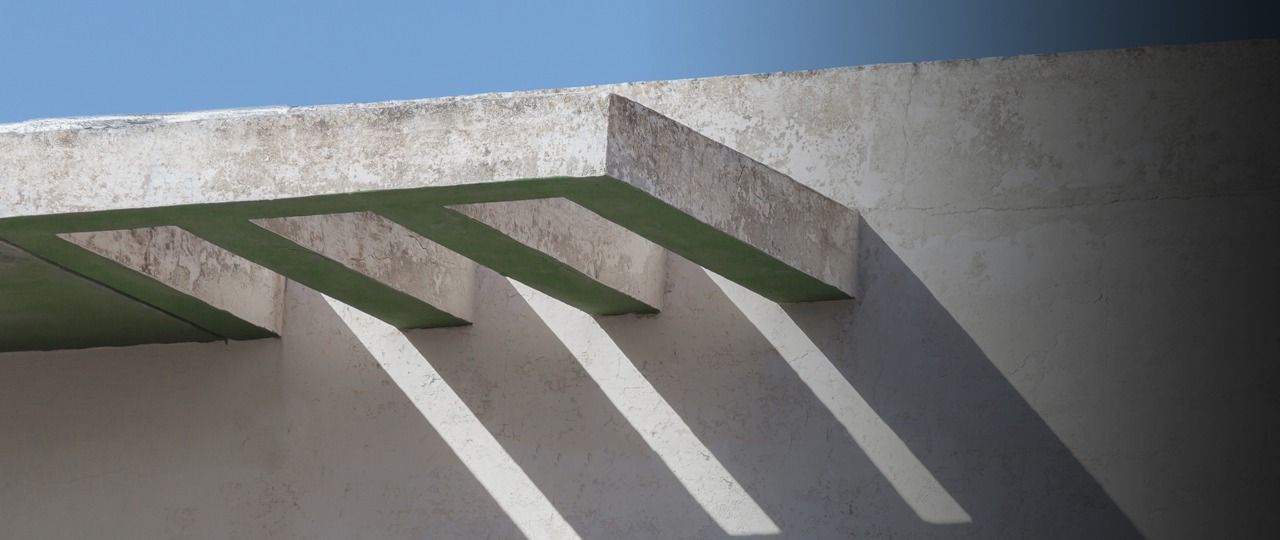
20th Century Modern architecture has a particularly striking character, with bare concrete, geometric lines and a minimal aesthetic. Learn how to restore this striking style of property in our guide to Modernist house restoration.
No architectural style divides opinion quite like 20th Century Modernism. Those who love Modernism admire it for its bold experimentalism, its egalitarian spirit and its utilitarian emphasis on function over form. Those who are less enamoured see buildings whose global style stands at odds with the local vernacular.
However, no matter which side they choose, architectural enthusiasts will find no greater joy than restoring and living in a property that exhibits everything wonderful about 20th Century radical form.
The Modernist house movement
Modernism as an art style developed as a resistance to the 19th Century obsession with ornamental design, which prioritised style over substance. Modernism, in contrast, was all about breaking down conventional ideas, endless experimentation, and re-imagining design from an industrial perspective. When the concept of Modernism first emerged at the start of the 20th Century, this focus on artistic experimentation also influenced the architecture of the period.
The grandfather of Modern architecture was the Swiss-French architect Le Corbusier, who wrote the Modernist manifesto, Towards A New Architecture, in 1923. His influence spread to the short-lived Bauhaus School in Germany, where a new generation of Modern architects was created. Modernist architecture hit the prime time when it was showcased at the 1933 World’s Fair in Chicago, in an exhibition titled “Homes of Tomorrow”.
In the United Kingdom, Neo-Classical and Neo-Georgian architecture dominated until the Blitz created an urgent need for new housing. The defining moment for British Modernism was the 1951 Festival of Britain, in which international visitors saw the completely redesigned, Modernist South Bank in London, featuring the brand-new Royal Festival Hall.
How to recognise Modernist property
Despite being the first international style, Modernism cannot be defined by any one aesthetic, as various countries interpreted Modernism in their own way. However, underpinning all of these interpretations is the central philosophy of Modernism, summed up perfectly by Le Corbusier: that form should follow function.
Modernist architecture can usually be identified by its shape. Modernism often focuses on simple, geometric forms, such as solid rectangles, straight lines and simple, repetitive patterns. Where colour is used, it tends to be conservative, with monochrome being the style du jour.
Materials are another indication of Modernist style. The Modernist period was sometimes referred to as the era of ‘radical concrete’, and many buildings feature exposed concrete walls, floors and roofs. Steel and glass also feature prominently, while Scandinavian-inspired Modernist properties may feature intricate brickwork and wood panelling.
Where to find Modernist property
Modernist properties are often characterised by inner-city high-rise apartment buildings and post-war estates. Some of the finest examples of British Modernism are found in city centres – Alexandra Road Estate in London and Park Hill in Sheffield are both Grade II Listed.
Meanwhile, there are plenty of Modern homes to be found in the post-war New Towns. Locations such as Milton Keynes, Bracknell and Stevenage, which were newly built after the war, contain large estates of spacious family homes in a variety of Modern styles.
However, Modernism was not solely confined to towns, and found its way into far-flung corners of Britain. There are excellent Modernist properties in places such as Berkshire, Surrey and Leicestershire, as well as remote Devon and Perthshire.
Things to know before buying a Modernist house
Fortunately, as most Modernist properties were built post-WWII, they are often compliant with contemporary standards, which simplifies renovation efforts.
However, Modernist property investors should be careful to choose a surveyor with plenty of experience in the Modernist property market. They should pay special attention to the unique architectural features of the building, such as flat roofs and rendered walls which may be vulnerable to a number of problems that could be expensive to fix.
Before purchasing a Modernist property, buyers should also check if the building is listed. If it is, expert consultation will be required when carrying out certain types of renovation.
Common issues with Modernist homes
When renovating a Modernist property, there may be a need for very specific engineering solutions for issues, so take the time before purchasing the property to conduct a thorough survey. Faulty plumbing or wiring in any other type of property can be simple to repair, but in Modernist properties may require significant modification.
Whilst not all Modernist homes are built with concrete, this material may see damage with age, which can require structural examination. Flat roofs may also cause issues with water buildup, and investors are advised to take particular care if their property has this feature.
Although it was most commonly used in public buildings, some private houses built between the 1950s and 1970s incorporated asbestos as insulation. Should it be found in a property, a professional survey will be required to make sure the asbestos is not deteriorating, which would require expensive removal.
The benefits of restoring a Modernist home
Purchasers of a Modernist property can delight in owning a piece of the most innovative architectural period in history. Modern homes are very easy to own and maintain, and are simply a pleasure to renovate. They incorporate some of the latest trends in architecture and interior design, from bold lighting to intriguing floorplans.
Whilst not every Modern property requires renovation, those that do can be improved relatively easily. This style of property is much more likely to be energy efficient, with up-to-date insulation, high-quality plumbing, functional electrics, and newer boilers.
Read more about our private property project services or see select Modernist properties currently for sale in the United Kingdom.
